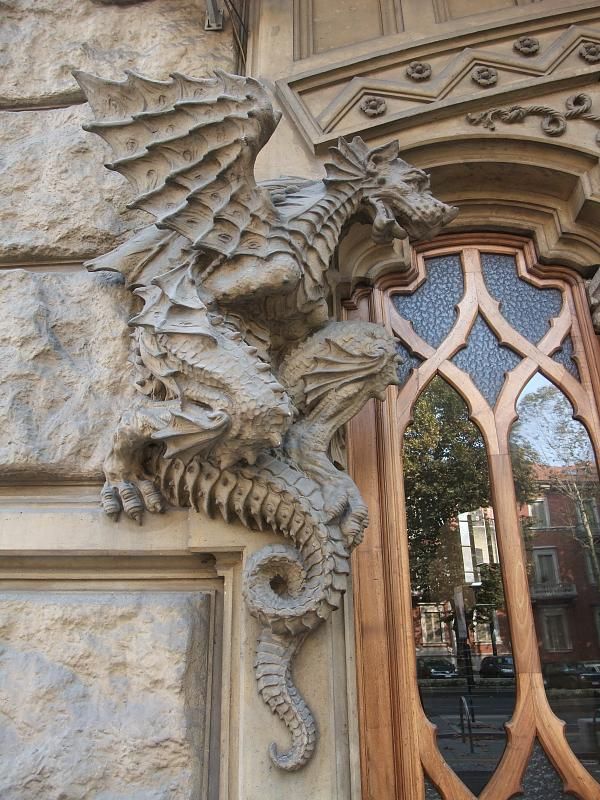#7378. Neo-Gothic Facade with Stone Dragon: Dynamics and Craftsmanship in Architectural Plastics

The image showcases an impressive architectural element on a Neo-Gothic building facade – a sculptural representation of a dragon or wyvern, masterfully carved in stone. This is a striking example of decorative plastics characteristic of Neo-Gothic architecture.
The dragon is depicted in a dynamic pose, as if emerging from the facade wall. The masterful elaboration of details reveals the scaly texture of the skin, expressive wings with membranes, powerful claws, and a sinuous tail. The sculpture demonstrates an excellent understanding of the anatomy of this fantastic creature and showcases a high level of stone carving craftsmanship.
To the right of the dragon, a portion of a window opening with a Gothic-style wooden frame is visible. The window is decorated with pointed arches and characteristic tracery typical of Neo-Gothic style. The glass surface of the window reflects the surrounding urban environment, creating an interesting visual contrast between the fantastical element and the real urban space.
The entire facade is constructed from light-colored stone with a characteristic texture, which emphasizes the relief and expressiveness of the sculptural element. This is a vivid example of how architectural plastics can enliven and enrich the appearance of a building, giving it expressive character and narrative quality.